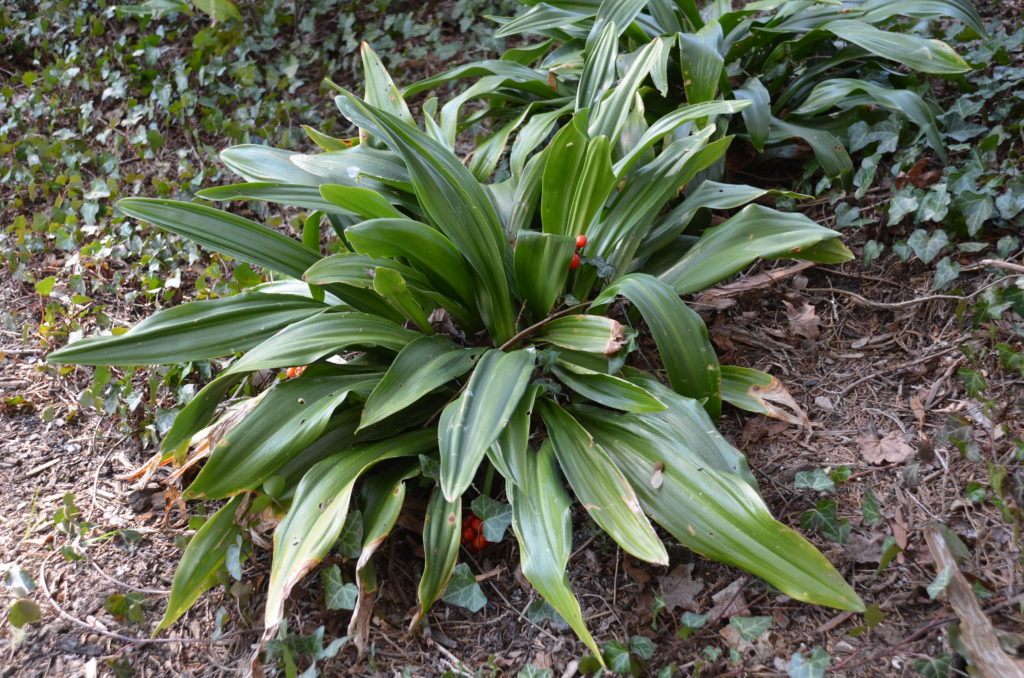Sacred lily (Rohdea japonica), aka nippon lilies, are native to Japan and China. Rohdeas are truly collector’s plants (USDA hardiness zones 6-10). In the Orient these lovely shade perennials are highly revered. In traditional Japanese horticulture, sacred lilies (known as o moto) came to be associated with long life and good fortune. Containers are planted near the entry to courtyards and homes. Over the past two centuries colorful, contorted, ridged, dwarf, giant, or variegated leaf forms have been bred, almost all with Japanese names.

Rohdeas are members of the asparagus family (Asparagaceae). Plants are rhizomatous perennials that grow 8-18 inches high depending on cultivar.
Well-established clumps produce short-stemmed, creamy to greenish, white bell shaped flowers. The racemes appear in early spring. found at the base of the plant. Blooms are mostly hidden within the dense leathery foliage and therefore mostly inconspicuous. Red or orange ornamental berries follow in late fall and last through most of the winter.
Sacred lilies are simple to grow and live for many years. Plants prefer a moderately moist, humus-rich, well-drained garden soil. They’re especially adapted to deep shade. Several varieties appear to be reliably hardy to Zone 6. Rohdeas are not troubled by diseases, pests or deer.
Sacred lilies produce dark green, evergreen, strap-like (lanceolate) leaves. They look like a garden-hardy snake plants (Sanseviera). New plants start off slowly, but do multiply and form large colonies of ground covering. Numerous divisions over time can help you build a collection which you can trade back and forth with other collectors.
Where to shop for Rohdea japonica: www.plantdelightsnursery.com lists 7 varieties, the most that I’ve seen from a single nursery source. Plants are also traded on Ebay.

 Posted in
Posted in 
